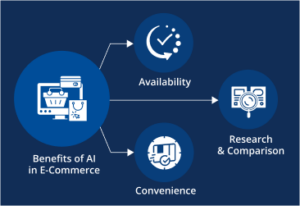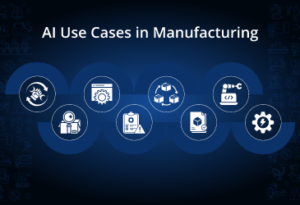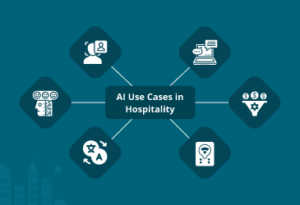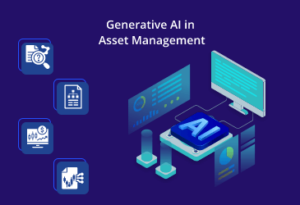Smart fleets: Leveraging AI in fleet management for enhanced safety and operational efficiency
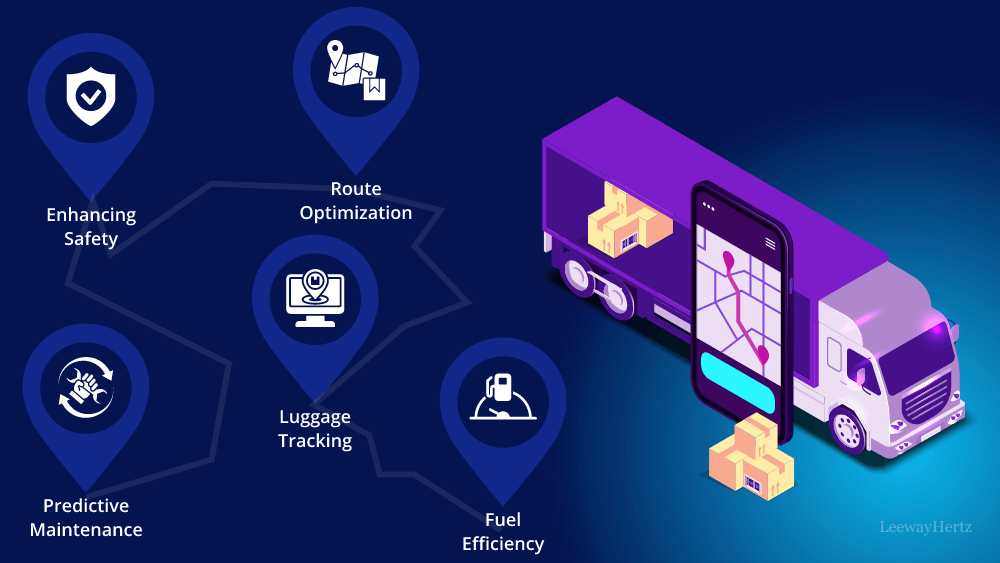
In today’s fast-paced world of transportation and logistics, fleet management plays a crucial role in maximizing efficiency to meet the ever-growing demands of a dynamic market. It is the meticulous orchestration and supervision of vehicles, driving forward operational excellence, cost savings, and peak productivity. With logistics and transportation industries fast gaining traction, there is an escalating demand for avant-garde solutions to elevate fleet performance. Enter Artificial Intelligence (AI)—a transformative force redefining fleet management with unparalleled capabilities. From harnessing data for insightful decisions and predictive maintenance to optimizing routes and enhancing safety to setting new benchmarks, AI is transforming the landscape.
Companies are not merely adopting but actively integrating AI-driven fleet management tools to carve out a distinctive competitive advantage. These AI-driven solutions enhance operational efficacy and equip managers with a comprehensive view for informed decision-making, assuring the optimal use of resources and heightened safety protocols for the entire fleet. A study by Fortune Business Insights paints a promising picture: the global fleet management software market is poised to soar from $23.67 billion in 2023 to a staggering $79.82 billion by 2030, charting a Compound Annual Growth Rate (CAGR) of 19% during this period.
One of the prime reasons behind the growing use of AI in fleet management is its ability to sift through and analyze mountains of data—from GPS coordinates to intricate sensor readings and from historical performance metrics to the here-and-now statistics. Such rich data aids in crafting real-time decisions that streamline processes and minimize costs. For example, advanced AI algorithms can forecast maintenance requirements, allowing companies to preemptively schedule repairs, reducing downtime and lowering repair costs. Furthermore, AI facilitates the dynamic optimization of routes, considering traffic flux, meteorological changes, and other unpredictable factors, leading to quicker deliveries and reduced fuel usage. Beyond operational efficiency, AI champions safety by vigilantly tracking driver patterns, offering instant feedback, and taking steps to avert potential mishaps.
Explore this article to understand the transformative impact of AI in fleet management, its nuances and its diverse applications across sectors.
- What is fleet management?
- What are the technologies behind AI-enabled fleet management?
- The key components of an effective fleet management strategy
- Use cases of AI in fleet management
- How does LeewayHertz’s generative AI platform optimize fleet management workflows?
- Benefits of AI in fleet management
- The future of AI in fleet management
What is fleet management?
Fleet management is the process of organizing, coordinating, and facilitating the operation and maintenance of a fleet of vehicles within a company or organization. It’s a procedural necessity and a strategic function vital for businesses and agencies where transportation is at the heart of service or product delivery. Its primary objective is to control costs, enhance productivity, and mitigate risks associated with operating a fleet of vehicles. This systematic approach drives several essential benefits for an organization, including improved efficiency in vehicle acquisition, effective fuel management, strengthened fleet compliance, heightened employee safety, and reduced carbon emissions.
At its core, fleet management entails various responsibilities overseen by fleet managers. These responsibilities encompass vehicle maintenance, meticulous tracking of fuel consumption and associated costs, effective driver management, optimizing asset utilization, planning efficient routes, and implementing programs aimed at boosting overall company productivity while minimizing waste.
Organizations often leverage specialized tools and technologies, such as vehicle telematics and fleet management software, for efficient fleet management. These advanced solutions enhance fleet efficiency, streamline operations, and reduce operational costs.
What are the technologies behind AI-enabled fleet management?
Explore the pivotal technologies underpinning automated fleet management, driving advancements in both safety and efficiency for fleets.
Telematics
Telematics systems play a crucial role in modern fleet management by collecting and analyzing real-time data from various vehicle sensors. This technology gathers information such as location through GPS, speed via accelerometers, and vehicle health using engine sensors. The wealth of data can be overwhelming for fleet managers, which is where AI steps in to process and translate this data into actionable insights.
By leveraging AI algorithms, telematics systems can turn large data sets into meaningful insights about vehicle performance and driver behavior. These insights can help fleet managers identify potential issues and take proactive measures to enhance fleet safety, efficiency, and productivity. A significant reduction in fleet accidents is a primary advantage of integrating AI into telematics systems.
Machine learning
You can use machine learning techniques to ‘feed’ algorithms with telematics data, allowing them to learn and build predictive models without explicit programming. This enables data analytics systems to process vast amounts of information and analyze historical events, allowing predictions of future events.
The predictive capabilities derived from ML empower businesses to anticipate events before they occur, providing a competitive advantage. For instance, with the help of historical telematics data and predictive models, businesses can foresee when vehicles require maintenance based on usage patterns. This proactive approach prevents accidents and enhances employee safety while keeping operational costs in check.
Integrating AI and machine learning with telematics amplifies the potential to drive efficiency, safety, and cost-effectiveness in fleet management and other industries that rely on data-driven decision-making.
Computer vision
In contemporary fleet management and automotive technology, lane departure warning, blind spot detection, etc., are noteworthy innovations. These systems employ sophisticated components such as sensors, cameras, Light Detection and Ranging (LIDAR), and image processing algorithms to bolster fleet safety.
Lane departure warning utilizes real-time data to alert drivers about unintentional lane departures, minimizing accident risks. Blind spot detection enhances safety by detecting vehicles in blind spots and issuing timely warnings. Video telematics integrates various data sources and cameras to monitor road conditions, driver alertness, and incidents, aiding safety protocols and risk reduction in fleet management. These technologies represent pivotal advancements in road safety and operational efficiency.
Natural Language Processing (NLP)
NLP technology empowers AI systems to comprehend, interpret, and interact with human language, offering valuable applications in analyzing communication between drivers and fleet managers. This technology enables drivers to issue commands such as making phone calls, accessing real-time traffic information, or receiving alternative route suggestions, enhancing overall efficiency.
Furthermore, fleet managers can utilize NLP to provide immediate feedback to drivers through text-to-speech capabilities when detecting risky driving behavior. This direct and real-time communication contributes to enhanced safety and performance.
Incorporating AI-enabled hands-free interaction ensures drivers can maintain their focus on the road, reducing distractions and, consequently, the likelihood of accidents. NLP is a critical enabler of safer and more efficient communication within fleet management.
The real-world effectiveness of NLP would depend on various factors, including technological integration, system design, and user experience.
Drive Efficiency in Fleet Management with AI
Optimize your fleet operations using advanced AI solutions. LeewayHertz specializes in tailoring AI technologies to enhance performance and reduce costs.
The key components of an effective fleet management strategy
Asset management
Vehicles stand out as one of the most substantial investments for organizations. The reliable performance of these assets is paramount in achieving operational goals and satisfying customer expectations. Mismanaged assets can result in amplified costs, reduced productivity, and compromised safety. Therefore, asset management is pivotal in the fleet management strategy.
Vehicle maintenance emerges as a cornerstone of asset management. Regular maintenance is indispensable for preserving vehicles in peak condition, averting breakdowns, and ensuring the safety of drivers and transported cargo. Taking a proactive stance toward maintenance entails adhering to recommended service schedules, conducting systematic inspections, and promptly addressing any identified issues. Implementing preventive maintenance programs empowers organizations to curtail unscheduled repairs and curb the risk of unforeseen vehicle failures that could disrupt operations.
Driver management
Effective driver management is the linchpin that can lead to increased productivity, cost reduction, and heightened customer satisfaction. Conversely, neglect in this area can result in accidents, elevated fuel consumption, poor customer experiences, and potential legal liabilities. As such, businesses must recognize driver management as a cornerstone within their fleet management strategy.
Furthermore, AI technology can be leveraged to enhance driver management. AI technology offers instant feedback to drivers regarding their driving habits, promptly notifying them about harsh acceleration, abrupt braking, or unsafe behaviors. This encourages drivers to self-correct, ultimately reducing the chances of accidents.
Cost management
Efficient cost management is essential for organizations relying on a fleet of vehicles, offering a gateway to operational optimization, enhanced profitability, and sustained competitiveness. An enterprise’s financial health and competitive edge hinge on prudent management and control of fleet costs. Fleet operations incur multifaceted expenditures encompassing fuel costs, vehicle maintenance, insurance, licensing, and depreciation. Ineffective cost management can lead to unwarranted expenses, reduced profitability, and compromised financial stability. Hence, businesses must prioritize cost management as a pivotal element of their fleet management strategy.
A reasonable selection of vehicles and their lifecycle management significantly contributes to cost-effective fleet management. Optimal vehicle selection tailored to specific operational requirements, encompassing payload capacity, fuel efficiency, and maintenance costs, can profoundly impact long-term cost management. Managing the lifecycle of vehicles necessitates a strategic approach to vehicle replacement, thereby minimizing maintenance costs associated with depreciated vehicles and capitalizing on new technologies offering improved fuel efficiency and performance.
Fuel management
Fuel management looms as a pivotal component of cost optimization and sustainability. The financial implications of fuel expenses are profound, making it imperative for businesses to manage fuel consumption actively. Fleet managers can meticulously gauge and analyze fuel usage by deploying fuel tracking systems. This data serves as a treasure trove, enabling managers to pinpoint areas for enhancement and execute strategies aimed at curtailing fuel consumption. An illustrative example is the role of a fleet tracker, which, by offering insights into fuel efficiency, empowers managers to make data-informed decisions that optimize routes and reduce delivery time.
The productive management of fuel results in substantial cost savings and aligns with an environmentally responsible agenda. Diligently monitoring fuel consumption and integrating cutting-edge fleet management technologies pave the way for reducing fuel expenses and positively contributing to a greener and more sustainable future.
Trailer tracking
In the complex network of fleet management, trailer tracking stands as a vital thread, offering valuable insights into trailer operations. Fleet management systems with real-time tracking capabilities provide a dynamic view of trailer locations within a fleet. This real-time data serves as a compass, guiding companies to plan and coordinate the utilization of trailers effectively. As a result, operational efficiency is enhanced, and cost savings are realized. By diligently monitoring trailer utilization, fleet managers can ensure that each trailer is maximally utilized, prolonging their lifespans and optimizing their value to the fleet.
Incorporating a fleet tracking system equips fleet managers with the means to monitor the movements of trailers, ensuring they are strategically positioned when needed, thus bolstering overall fleet productivity. Beyond optimizing productivity, trailer tracking enhances security, mitigating the risks of theft or unauthorized use. Fleet managers can receive immediate alerts in case of any unauthorized movement, courtesy of geofences that act as digital perimeters. These alerts prompt swift action, safeguarding assets and minimizing potential losses. Trailer tracking is a potent tool in the modern fleet manager’s toolkit, enhancing efficiency and security within fleet management.
Use cases of AI in fleet management
AI and ML technologies have been instrumental in innovating the development of fleet management software. AI in fleet management enables fleet managers to efficiently manage their entire fleet operations. The use cases of AI in fleet management include:
Rental and leasing
The car rental and leasing industry is experiencing rapid growth in adopting AI and ML technologies to improve the customer experience and optimize business performance. Key applications of AI and ML in this sector include:
- Customer service enhancement: AI-powered chatbots and virtual assistants are central to customer interactions in car rental and leasing companies. These AI-driven tools facilitate advanced services like booking rentals in advance, addressing common queries, and tailoring personalized packages based on individual preferences and historical rental and leasing data.
- Predictive maintenance: Car rental and leasing firms leverage AI and ML algorithms for predictive maintenance. These algorithms forecast when a vehicle may require maintenance by analyzing data such as vehicle mileage and the date of the last service. This proactive approach minimizes breakdowns during rental or lease periods, enhancing vehicle reliability, customer satisfaction, and overall trust in the company.
- Competitive pricing strategies: AI and ML are instrumental in optimizing pricing strategies. Rental and leasing companies harness these technologies to utilize data on vehicle preferences, demand patterns, and customer rental and leasing behaviors. This data-driven approach enables them to set competitive prices and identify and flag potentially fraudulent activities, such as using stolen credit cards or fake identifications. This helps minimize losses and ensures that prices remain competitive in the market.
E-hailing and ride-sharing
E-hailing services, including platforms like Uber, Lyft, and Bolt, rely on AI and ML as pivotal components to deliver efficient ride-sharing services. Here are several ways in which AI and ML are integral to the operations of e-hailing platforms:
- Connecting riders and drivers: E-hailing services harness AI and ML to connect riders with suitable drivers. These technologies consider multiple factors such as location, driver availability, and rider preferences (vehicle type or gender preference) to ensure the most convenient and efficient pairing.
- Route optimization: Upon matching a driver with a rider, the primary objective is to reach the destination swiftly and safely. AI and ML algorithms play an important role in optimizing routes for drivers, accounting for variables like traffic congestion, accidents, and other real-time factors. This benefits riders with affordable fares calculated at the end of the trip and enables drivers to use their time more productively, reduce fuel costs, and maximize their earnings.
- Enhancing safety: Safety is paramount in e-hailing services, protecting passengers and drivers while upholding a trustworthy reputation. ML algorithms are instrumental in prioritizing safety by collecting and analyzing data such as driver behavior, personal information, and driver ratings. This data enables e-hailing companies to identify potential safety hazards and take the necessary precautions, contributing to a secure and reliable experience for all stakeholders.
Transportation and logistics
The evolution of e-commerce and heightened delivery expectations has transformed the logistics landscape, with goods moving from point A to B to diverse locations, including homes and offices. AI and ML play pivotal roles in modern transportation and logistics in the following ways:
- Route optimization: Meeting the demands of swift delivery and handling sensitive products necessitates finding the quickest and safest routes. AI and ML systems analyze traffic patterns, weather conditions, and other data to optimize routes, thus averting potential delays, reducing delivery times, and minimizing fuel consumption.
- Asset tracking: Asset tracking is paramount in ensuring goods’ security throughout the supply chain. AI and ML technologies, such as GPS, are utilized to monitor the location and condition of vehicles and cargo. Additionally, real-time performance analysis of drivers, including factors like driving speed and braking patterns, ensures safety and security at every stage of the supply chain.
- Enhanced security: Cargo theft poses a significant risk in the supply chain, leading to substantial losses. AI and ML-powered security measures, including cameras in warehouses and vehicles for detecting suspicious activities and driver identification tags to prevent unauthorized vehicle use or warehouse access, provide real-time alerts and notifications, contributing to the prevention of theft and loss.
Drive Efficiency in Fleet Management with AI
Optimize your fleet operations using advanced AI solutions. LeewayHertz specializes in tailoring AI technologies to enhance performance and reduce costs.
Healthcare
- Medical supply and equipment distribution
AI-enhanced fleet management ensures the seamless flow of medical supplies, pharmaceuticals, and equipment to healthcare facilities. AI algorithms analyze traffic, weather, and other dynamic variables to optimize delivery routes and schedules in real-time, safeguarding a consistent supply chain that prevents disruptions and maintains adequate inventory levels. - Home healthcare services
AI plays a significant role for home healthcare providers, who frequently rely on fleets to reach patients within their residences. AI-driven tools optimize scheduling and route planning by processing vast amounts of data to make intelligent decisions, enabling healthcare providers to extend their services to more patients efficiently. - Maintenance and compliance
AI significantly enhances fleet management systems in the healthcare sector, where vehicle maintenance is crucial for patient safety. AI can predict when vehicles need maintenance, facilitating the proactive scheduling of vehicle maintenance, ongoing monitoring of vehicle conditions, and ensuring rigorous adherence to safety regulations imperative for maintaining quality patient care. - Cost efficiency
AI in fleet management helps healthcare organizations streamline operations and reduce operational costs. Through predictive analytics, AI helps optimize fuel consumption, minimizing maintenance expenses and improving route planning, resulting in significant cost savings that can be reinvested in patient care. - Emergency response
AI-powered fleet management systems are invaluable during emergencies such as natural disasters or large-scale accidents. They enable healthcare providers to mobilize swiftly by providing real-time insights and optimizing the deployment of vital resources to areas requiring immediate attention, ensuring a prompt and effective emergency response.
Travel
- Demand forecasting: AI can analyze historical booking data, travel trends, and external factors like holidays or events to predict demand for travel services. Fleet managers can adjust their vehicle allocation and schedules accordingly, ensuring they have the right number of vehicles and drivers to meet demand.
- Dynamic pricing: AI-driven pricing algorithms can adjust fares in real time based on demand, availability, and other variables. This helps maximize revenue during peak travel times and offers competitive pricing during off-peak periods.
- Safety and security: AI can enhance passenger safety by monitoring in-vehicle cameras for incidents and alerting fleet managers or authorities in real-time. It can also analyze driver behavior to ensure that safety protocols are followed.
- Real-time traffic updates: AI can provide real-time traffic updates and suggest alternative routes to drivers, helping them avoid congestion and reduce travel time. This is particularly valuable for shuttle and bus services in urban areas.
- Luggage tracking: AI-powered luggage tracking systems enhance the passenger experience by providing real-time location updates for travelers’ bags, minimizing the risk of lost luggage. This technology ensures greater peace of mind and convenience for air and ground travelers.
Manufacturing
- Optimized route planning: AI algorithms analyze real-time traffic data, delivery schedules, and vehicle capacity to optimize delivery routes. This ensures that manufacturing fleets reach their destinations efficiently, reducing fuel consumption and operational costs.
- Inventory management: AI helps manage and optimize inventory levels for raw materials, parts, and finished products. It ensures that manufacturing facilities have the right inventory at the right time, preventing delays and production stoppages.
- Fleet utilization: AI can determine the fleet’s most efficient allocation of vehicles and resources, minimizing idle time and operational expenses. Manufacturers maximize efficiency and utilization by intelligently assigning assets, ultimately enhancing productivity and cost-effectiveness.
- Load balancing: AI-driven load allocation ensures that manufacturing vehicles are loaded with precision, considering weight, volume, and delivery schedules. This optimized approach minimizes vehicle wear and tear, reduces fuel consumption, and enhances the fleet’s efficiency.
E-commerce
- Last-mile delivery optimization: AI helps determine the best strategies for last-mile delivery, including package handoff points, delivery time windows, and optimal routes for delivery personnel. This ensures prompt and efficient delivery to customers.
- Predictive analytics for demand planning: AI analyzes historical order data and external factors (e.g., holidays, promotions) to predict future demand. This helps e-commerce companies plan their fleet capacity and distribution strategies to meet customer expectations during peak times.
- Return logistics optimization: AI helps optimize return logistics by planning efficient routes for collecting returned items. This streamlines the return process, reduces transit time, and improves customer satisfaction.
- Warehouse and inventory management: AI optimizes inventory management by predicting product demand, allowing for efficient warehouse operations, reducing storage costs, and ensuring product availability for timely order fulfillment.
- Load balancing and vehicle utilization: AI algorithms optimize the allocation of deliveries to available vehicles, considering package sizes and weights. This maximizes vehicle utilization, reduces fuel consumption, and improves overall fleet efficiency.
Drive Efficiency in Fleet Management with AI
Optimize your fleet operations using advanced AI solutions. LeewayHertz specializes in tailoring AI technologies to enhance performance and reduce costs.
How does LeewayHertz’s generative AI platform optimize fleet management workflows?
LeewayHertz’s generative AI platform, ZBrain, plays a transformative role in optimizing fleet operations by offering solutions to optimize processes, fortify decision-making, and elevate overall operational efficiency. As a comprehensive, enterprise-ready platform, ZBrain empowers businesses to design and implement applications tailored to their specific operational requirements. The platform uses clients’ data, whether in the form of text, images, or documents, to train advanced LLMs like GPT-4, Vicuna, Llama 2, or GPT-NeoX for developing contextually aware applications capable of performing diverse tasks.
Within the realm of fleet management, enterprises face persistent challenges that include inefficient route planning, vehicle downtime, and the ongoing need for continuous tracking of performance metrics. ZBrain effectively addresses these challenges through its distinctive feature called “Flow,” which provides an intuitive interface that allows users to create intricate business logic for their apps without the need for coding. Flow’s easy-to-use drag-and-drop interface enables the seamless integration of large language models, prompt templates, and media models into your app’s logic for its easy conceptualization, creation, or modification.
ZBrain’s robust applications optimize fleet management operations by converting complex logistics data into actionable insights, resulting in enhanced vehicle performance, increased overall efficiency, and the establishment of a safer, more cost-effective, and customer-centric operation. The example below demonstrates how ZBrain transforms fleet management within the logistics industry:
AI-driven fleet management in logistics
Leverage ZBrain apps to optimize key facets of fleet management, including route planning, vehicle maintenance, and logistics coordination. The platform acquires pertinent data from diverse sources, including fleet details, operational data, GPS and telematics data, and maintenance records, which undergo automated Exploratory Data Analysis (EDA), revealing valuable insights to deepen the understanding of fleet management for informed decision-making. To enhance data analysis efficiency, ZBrain employs advanced embedding techniques, transforming textual data into numerical representations that capture semantic relationships, facilitating streamlined retrieval and analysis.
When a user submits a query for the fleet management report, ZBrain fetches relevant data based on query requirements. This data is then transmitted to the selected LLM model to generate a comprehensive and coherent fleet management report. Following report generation, ZBrain meticulously parses the output, extracting crucial details and structuring the data according to desired formats and guidelines. This integrated process ensures that ZBrain automates and refines data analysis and delivers actionable insights for optimized fleet management and decision-making.
ZBrain applications enable organizations to enhance fleet operations, elevate performance monitoring, and efficiently manage fleets while maintaining rigorous data privacy standards. The results span from improved resource allocation and heightened productivity to elevated service levels, fostering a comprehensive enhancement of operational efficiency. Dive into this detailed Flow to understand how ZBrain fundamentally redefines fleet management, providing a more agile and efficient logistics system adeptly adapting to dynamic market changes and evolving customer needs.
Benefits of AI in fleet management
The benefits of AI in fleet management include:
Improved driver and vehicle safety: AI in fleet management systems uses real-time monitoring and analysis of driver behavior, identifying risky practices such as speeding, harsh braking, and risky driving habits. This immediate feedback allows for corrective action and training, promoting safer driving habits among drivers. As a result, this proactive approach reduces the likelihood of accidents, enhances overall road safety, and helps maintain a positive safety record for the fleet.
Vehicle tracking in real-time: Real-time vehicle tracking offers real-time location data and status updates for each vehicle in the fleet. This enables fleet managers to monitor the progress of deliveries, respond promptly to customer inquiries with accurate delivery times, and ensure efficient vehicle usage by optimizing routes and resource allocation. This increased visibility enhances operational transparency and customer satisfaction while reducing operational costs.
Improved vehicle routing: AI-driven fleet management systems use real-time data on traffic, weather, and road conditions to calculate the most efficient vehicle routes. Considering these factors, the system ensures vehicles take paths with minimal congestion and delays, reducing travel time. This enhances on-time delivery and lowers fuel consumption, leading to cost savings and a more eco-friendly fleet operation.
Improved dispatching: Real-time tracking provides up-to-the-minute information on the exact location and status of each vehicle in the fleet. This data empowers fleet managers to make informed decisions, swiftly delegating tasks to the closest available vehicles. This optimized dispatching reduces response times, improves delivery efficiency, and enhances overall fleet productivity, ensuring that resources are used effectively, and customer needs are met promptly.
Improved fuel efficiency: AI-driven fleet management optimizes routes, ensuring vehicles take the shortest and most fuel-efficient paths. It also monitors and improves driver behavior, minimizing practices like excessive idling or harsh acceleration, which wastes fuel. These measures lead to significant cost savings by reducing fuel consumption, and they also have a positive environmental impact by lowering greenhouse gas emissions, making fleet operations more sustainable and eco-friendly.
Improved safety: Real-time monitoring in fleet management involves constantly tracking and analyzing vehicles and drivers’ behavior. This approach allows fleet managers to receive immediate updates on vehicle location, driver actions, and performance metrics. In cases of safety violations, deviations from planned routes, or other issues, managers can swiftly intervene to maintain safety standards, reduce risks, and ensure that the fleet operates efficiently and by established guidelines. It promotes real-time decision-making and proactive responses to keep the fleet safe and productive.
Lower vehicle maintenance expenses: Predictive maintenance, driven by AI, utilizes data from sensors and historical performance to forecast when a vehicle or equipment is likely to experience issues or failures. This early detection enables proactive maintenance measures, preventing costly breakdowns and minimizing downtime. By addressing problems before they escalate, maintenance costs are significantly reduced, and the overall lifespan of fleet vehicles is extended, ensuring smoother and more cost-effective fleet operations.
Increased productivity: Real-time tracking offers complete visibility into fleet activities, enabling fleet managers to monitor vehicles and adjust routes in response to changing conditions. Optimized routing ensures that vehicles take the most efficient paths, saving time and fuel. Efficient dispatching, aided by these real-time insights, allows quicker task assignment to the nearest available vehicles. This holistic approach minimizes idle time, reduces unnecessary travel, and enhances overall operational efficiency, increasing productivity and cost savings.
These benefits collectively contribute to a more efficient and cost-effective fleet management operation, ensuring that vehicles are well-maintained, drivers are safe, and resources are utilized optimally.
The future of AI in fleet management
The evolution of AI promises exciting prospects for the future. AI is poised to enhance connected vehicle technology and communication systems, enabling vehicles to interact in real time, mitigating accidents and traffic congestion in the following ways:
- Vehicle-to-vehicle (V2V): Harnessing ML and Data Analytics, V2V emerges as a forefront technology, facilitating vehicles to share and analyze data seamlessly. It is an intelligent technology that allows vehicles to share data. By accessing speed and position details of nearby V2V-equipped vehicles through a wireless communication protocol akin to Wi-Fi, this information is utilized to notify drivers of potential hazards. V2V plays a pivotal role in curbing accidents and alleviating traffic congestion. Within a 300-meter radius, V2V can detect risky traffic conditions, road issues, and weather threats, ultimately enhancing road safety and predictability for all drivers.
- Vehicle-to-infrastructure (V2I): Integrating AI and Data Analytics, V2I becomes a cornerstone of the Intelligent Transport System. It gathers critical data like traffic congestion, weather updates, bridge clearance levels, and traffic signal statuses. This data is transmitted wirelessly to inform drivers about pertinent conditions, greatly enhancing safety. Including smart traffic signals through V2I aids drivers in gaining a deeper understanding of traffic conditions, allowing for more accurate arrival time estimations. As this technology advances, it holds the potential to enhance driver-assistance systems and may play a pivotal role in future city planning for traffic lanes, parking facilities, and more.
- Vehicle-to-everything (V2X): V2X, infused with AI technologies like ML and DL, evolves as a comprehensive communication paradigm. V2X technology combines V2V and V2I to make every vehicle smarter and safer by enabling seamless communication with the entire traffic system, including other vehicles and infrastructure. It can swiftly alert drivers to hazardous weather conditions, nearby accidents, traffic congestion, and risky behaviors in close proximity. V2X directly channels information to the vehicle, reducing the driver’s reaction time. Additionally, it streamlines driving by automating toll and parking payments. While V2X communication is pivotal for the future of self-driving and autonomous vehicles, there are concerns about software malfunctions, cybersecurity threats, and loss of vehicle control, which could have severe consequences for businesses and their reputations.
In addition to these technologies, other innovations are on the horizon, such as Vehicle-to-network (V2N) for wireless vehicle-to-vehicle communication, Vehicle-to-grid (V2G) that taps into electric vehicle batteries for grid power etc.
Advanced and well-developed Artificial Intelligence holds the potential to reduce, if not eliminate, vehicle crashes significantly. While there will inevitably be challenges, as with any emerging technology, advanced AI is poised to pave the way for safer and more interconnected road systems, benefiting both employees and customers. This transformation promises more precise route planning, enhanced vehicle diagnostics, and the prospect of safer and more intuitive automated vehicles that demand minimal driver and fleet management involvement. AI is driving a rapid transformation of the fleet management industry, ushering in unprecedented efficiency and safety improvements.
Endnote
AI in fleet management has emerged as a significant driving factor, fundamentally reshaping conventional practices and enhancing contemporary transportation and logistics businesses’ efficiency, safety, and sustainability. Its notable capabilities in data analysis, predictive maintenance, route optimization, fuel efficiency improvement, and safety monitoring are distinctly altering the landscape of fleet operations. This synergy between AI and fleet management streamlines operations and ensures a sustainable, competitive edge, ushering in a future where fleets are smarter, more responsive, and safer than ever.
As businesses increasingly integrate AI in fleet management strategies, they unlock a world of possibilities, optimizing their operations and gaining a competitive advantage in a dynamic market. The potential for AI to further evolve, driven by advancements in machine learning and data processing, presents an exciting future for fleet management. Harnessing AI in fleet management will save costs and streamline operations. It also paves the way for a safer and more sustainable future, ensuring that businesses stay at the forefront of innovation in the ever-evolving world of transportation.
Leverage the potential of AI in fleet management to drive efficiency, enhance quality, and optimize your business processes. Contact LeewayHertz today for all your AI consultancy and development needs!
Start a conversation by filling the form
All information will be kept confidential.
FAQs
What is fleet management?
Fleet management is organizing, coordinating, and facilitating the operation and maintenance of a fleet of vehicles within a company or organization. It involves strategic planning to control costs, enhance productivity, and mitigate fleet operating risks.
How does AI enhance fleet management?
AI enhances fleet management in several ways:
- Predictive Maintenance: AI analyzes data from sensors and historical maintenance records to predict when vehicles need maintenance, reducing downtime and preventing unexpected breakdowns.
- Route Optimization: AI algorithms optimize routes based on real-time traffic data, weather conditions, and historical patterns, minimizing fuel consumption and improving delivery times.
- Fuel Efficiency: AI-powered systems monitor driving behavior and vehicle conditions to provide recommendations for improving fuel efficiency, reducing operational costs, and minimizing environmental impact.
- Telematics and Monitoring: AI collects and analyzes data from telematics devices, offering insights into driver behavior, vehicle performance, and overall fleet health for informed decision-making.
- Driver Safety: AI applications monitor driver behavior, detect fatigue or distracted driving, and provide alerts or interventions to enhance overall safety and reduce the risk of accidents.
- Inventory Management: AI helps optimize inventory levels by analyzing demand patterns, ensuring that the right amount of goods is stocked in each vehicle, minimizing excess or insufficient inventory.
- Real-time Tracking: AI enables real-time tracking of vehicles, providing accurate and up-to-date information on the location and status of each vehicle in the fleet.
- Load Optimization: AI algorithms assist in optimizing the distribution of loads among vehicles, ensuring efficient use of resources and reducing transportation costs.
- Dynamic Scheduling: AI dynamically adjusts schedules based on changing circumstances, such as traffic conditions or unexpected delays, to maintain operational efficiency.
- Cost Optimization: AI-driven analytics provide insights into operational inefficiencies and cost-saving opportunities, helping fleet managers make informed decisions to optimize overall fleet performance.
In summary, AI enhances fleet management by improving operational efficiency, reducing costs, enhancing safety, and providing valuable insights for informed decision-making.
What are the key technologies behind AI-enabled fleet management?
The key technologies include telematics for real-time data collection, machine learning for predictive analytics, computer vision for safety features, and natural language processing (NLP) for hands-free interaction and communication.
How does AI enhance cost management in fleet operations?
AI in fleet management optimizes vehicle selection, lifecycle management, and fuel consumption, contributing to cost-effective fleet management. Predictive analytics helps anticipate maintenance needs, preventing costly breakdowns and reducing operational costs.
How does AI enhance safety in emergency response situations?
AI-powered fleet management systems are crucial during emergencies. They provide real-time insights, optimize resource deployment, and enhance communication, enabling swift and effective emergency response in natural disasters or large-scale accidents.
How can organizations benefit from LeewayHertz's AI solutions designed for fleet management?
Organizations partnering with LeewayHertz gain access to cutting-edge AI solutions that improve safety, efficiency, and cost-effectiveness in fleet management. The implemented technologies result in enhanced operational transparency and customer satisfaction.
What support and maintenance services does LeewayHertz provide for AI-enabled fleet management solutions?
LeewayHertz offers comprehensive support and maintenance services for AI-enabled Fleet Management solutions. This includes troubleshooting, updates, and continuous improvements to ensure the solutions’ longevity and optimal performance.






